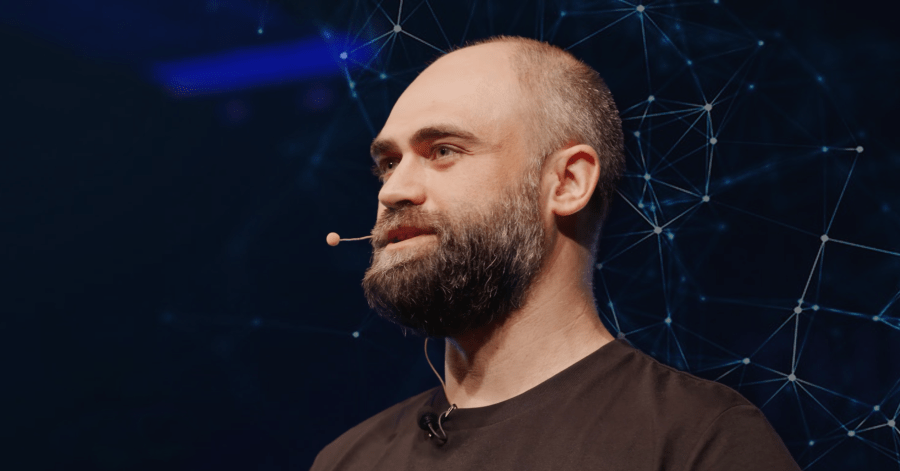“If I was asked about what I love most in the blockchain space, I would say the metaverse right away. It actually embodies everything that I like: collectibles, gaming, building communities, and speaking with people,” Cosmin Tronaru tells me.
Cosmin is the Head of Metaverse at Stakeborg, an organization that aims to become a blockchain hub in Romania. A developer at the roots, he switched gears after a couple of years of taking a career path that wasn’t really his. He liked the front end, the final product. The metaverse, one could argue, suited him like a glove.
As a gamer and collector himself, Cosmin believes successful metaverse platforms will take a user-first approach. This is antithetic to what we currently see in the market, where players are chasing monetization opportunities. For this reason, he advises against rushing into the space before educating yourself about the market and understanding the speed at which you can go.
In our interview, Cosmin demystifies the metaverse, gives us three pillars for building responsible and resilient metaverse platforms, talks about the differences between entertainment and utility, and reflects on who will be adopting the metaverse and why.
The Recursive: What does a Head of Metaverse do?
Cosmin Tronaru, Head of Metaverse at Stakeborg: Well, if something’s going to go wrong, the head is gonna fall first. It’s uncharted territory. I’m going to do what I do best. We’re juggling with new things for which we don’t know the direction in the short term, but we understand that they are here to stay in the long term. Like with any emerging technology, you have the pioneers with a long term vision, but the majority of people come in for the quick gain. So, from my position, I’m gathering as much info as I can and I’m trying to help people understand what the technology is about, to educate each other, so that we can build something of value.
How would you describe the metaverse to a five year old?
Just a word of caution – I think it’s dangerous for children under seven to try to understand the metaverse. My mom is a kindergarten teacher, so I grew up reading books about child development. We’re going to spend our lives with technology in our hands. But in the first seven years of life, the brain just takes everything in like a sponge. The metaverse might be tricky for small children because it may cause them to lose hold of reality.
But to answer the question, I think the metaverse can be explained as a place where they can just take their toys from one game to another without losing or breaking them. It is also a place where they’re going to be safe from a physical point of view.
What concerns you when it comes to the use cases of the metaverse and how it will be monetized?
Unfortunately, most of the big players building metaverse platforms and projects seem to be here just for the money.
They don’t really care about what the technology can bring and especially what it can do for the normal user. What they see is a monetizing funnel.
At times like this, when there’s a big shift, we – the masses – hope that some of the pie will be reserved to the people, but sadly, I think it’s going to end up in the same few hands. It’s still the big players who will take the lion’s share.
Meta for instance says they will give 45-47% of the income to contributing content creators, and for the market, this seems huge. The royalties are generally at 10%. But the platform is just a container. You write the content and you pay them to promote your content. And it’s not just Meta, everybody’s into this race.
On the other hand, I think Epic Games will do a great job. Epic Games is the company that created the Unreal Engine, the 3D creation tool that is used in most games today. They gave the fifth iteration of Unreal Engine for free to all developers. This had a huge impact: what took a programmer like half a day to build, now takes them 30 seconds. That opens up the gateways to every company to start building.
If you were to summarize three pillars of developing the metaverse in a sustainable way, what would those be?
1. Start with the why and place users first
I think most stakeholders in the metaverse today are taking the tech point of view. They don’t try to get it right from the end user point of view. I think the answer is in the Golden Circle that Simon Sinek talks about. You should start with why, then move to how, and then to what, not the other way around.
For example, it was easier for a person to join the crypto space by understanding what an NFT is because it is easier to understand the front end bit, what looks great, and only afterwards all the technology behind. This is also the thinking that made Apple such a success – Steve Jobs understood the importance of the user experience.
If you were to start with the why in mind in the metaverse, you should understand the gamer mentality.
They are an essential cog in the machine. The gamer mentality is totally different. The gamer, first of all, is there for fun, for the thrill of the race. He doesn’t care about the money involved. That’s why I think Epic Games has a big chance of getting it right, because they started from understanding the gamers’ mentality.
2. Optimize for accessibility
The second pillar to building metaverse platforms should be optimization. If you build something that takes a lot of resources, but it’s only available for the people who buy the top notch technology, you are failing. Blizzard Gaming, the creator of World of Warcraft, managed to reach everybody because every game was well optimized. When they launched it, you could have played it on a 5-10 year old computer. It takes a longer time to optimize everything, but you make sure that you can reach anybody who would be interested in what you offer.
3. Build with interoperability in mind
The old behavior was to build the ecosystem for the players and keep them there. If you build with this mentality, you’re gonna screw up sooner or later. An interoperability mindset means that you understand you might lose some customers as part of the game. You should make it easy for them to take what they build in here somewhere else. Because from the user perspective, if I know that I can switch whenever I want, I am assured that the company I choose will do its best to keep me as their customer. This creates a healthy competition.
What should we remember as the key technical infrastructure elements of the metaverse?
The whole idea of the metaverse came at a time when the tech is already top notch.
The metaverse is split between entertainment and utility.
Utility means that you can use 3D and AR, for instance, to see how a physical project will turn out before actually building it. Then there are a lot of companies that are close to launching their smart goggles. When Google launched Google glasses 10 years ago, it failed not because it didn’t have utility, but because they were too ahead of their time and they looked so science fiction that most people were ashamed to wear them outside of their home.
The entertainment part is virtual reality. Here, the metaverse helped evolve the existing technology. We had the technology in place, but the resolution was messed up. Right now, we have VR goggles with a 6k or 8k resolution and soon enough, there’s a company, a no-name company for the big brands, that will come out with 12K resolution goggles that will change everything. Studies have shown that the eye perceives something like around 6K to 8k, so if they do 12k, it’s pretty much going to simulate reality.
There’s also a potential danger to mention here, depending on how these technologies are used. I’ve seen people screaming in terror while in a game simulation because it felt so real. That’s the problem with small children as well. It affects your brain a lot.
As a collector, what value, but also drawbacks have you encountered in the NFT world so far? How do you expect this space to evolve in the next 1-3 years?
For me, it was like going to Disneyland. I grew up collecting stuff, but in Romania there is no actual collector mentality. Take the example of football cards. In the US, they would print 100 of each. In Romania, they print as many as possible. You cannot be a collector with this approach because the sense of uniqueness is missing.
When NFTs launched, I saw the potential for this collector mentality to spread out from the United States and Japan all around the world.
It’s actually better now, because in the old days, when you were collecting something, what dictated the price besides the rarity, was the condition. Now, the condition is ensured by the asset being held on blockchain.
The bad part is that 95-98% of what’s on the market right now is a scam. To the point that when the Bored Ape Yacht Club dropped their MAYC collection, for example, you could see four other collections with almost the same name on Open Sea. They just change a letter or something like that. And they add something that looks like the original collection, but it isn’t.
In the end, it’s not about the picture, but what it represents, the utility, the access to a community, things like that. So, our biggest job right now is to help people understand what’s happening and to avoid the scams. Unfortunately, I think this is still going to happen for a long time, because it’s in our human nature to try to cut corners.
What would you advise tech professionals and entrepreneurs dipping their toes in the metaverse and blockchain space?
Forget everything you know, and understand that it’s a new world out there.
Romania is one of the top countries in gaming right now. We had the DOTA international championship for computer gaming held here last year. However, I still think there’s a big gap in how people over 20 and people below 20 think about gaming. Most professionals and entrepreneurs who come from web 2.0 grew up in different times and were trying to build a future with those past convictions. And I don’t think it works that way anymore.
Most of the people who are going to live their lives on metaverse platforms are going to be the people who are not even 20 yet.
By the time something great is going to be built that can be used by the masses – 5-6-7 years from now, the people who are now 15 to 20 are going to be 20-27.
And of course it’s difficult to forget everything we know because a new thing came along. Simon Sinek talks about the diffusion of innovation, which says that 2.5% of the people are visionaries and the 13.5% are early adopters. These are the people who are in blockchain and crypto right now. Another 35% are going to join later in the game and another 35% when the use case is very clear. And then there is another 15% who never joins. My explanation for those never joining is that it feels more unique to them to not do as the crowd does, just as it is for the early adopters to be the first to join.








